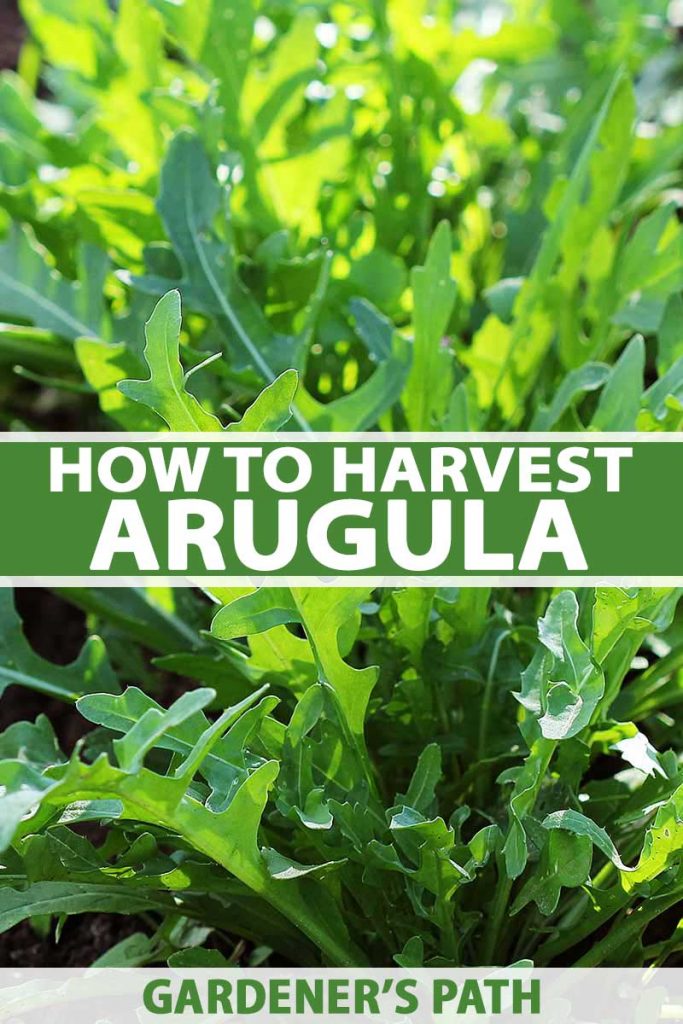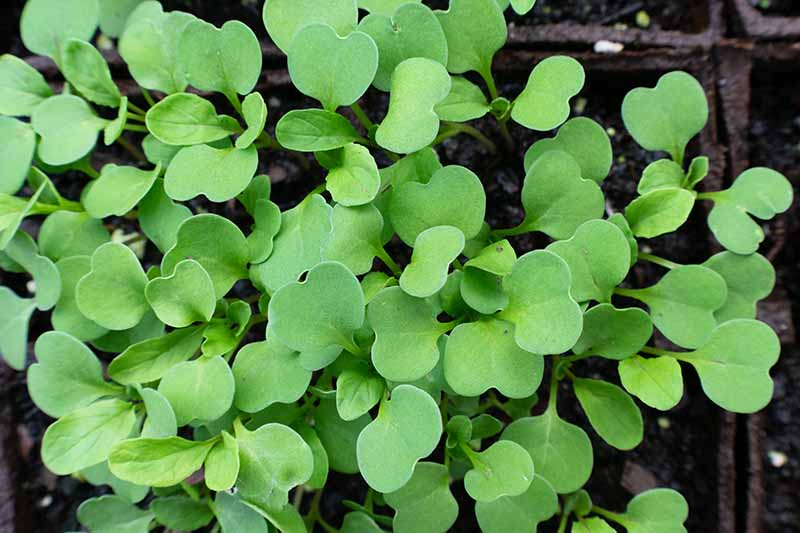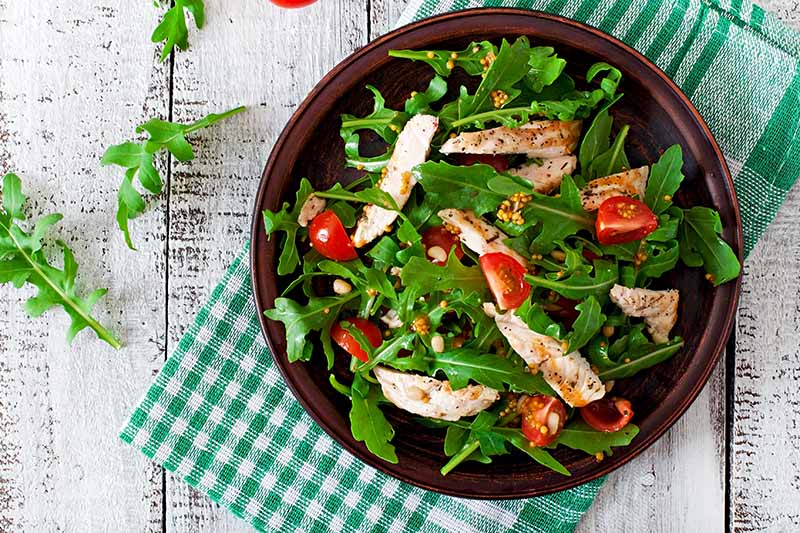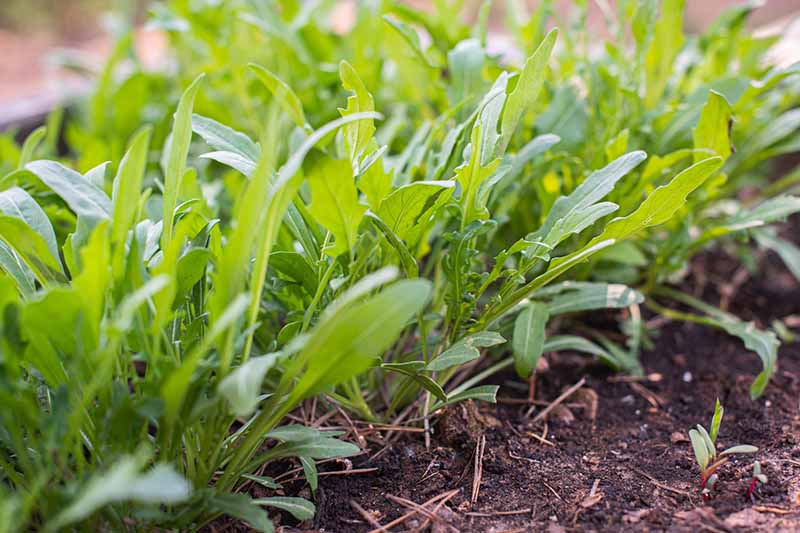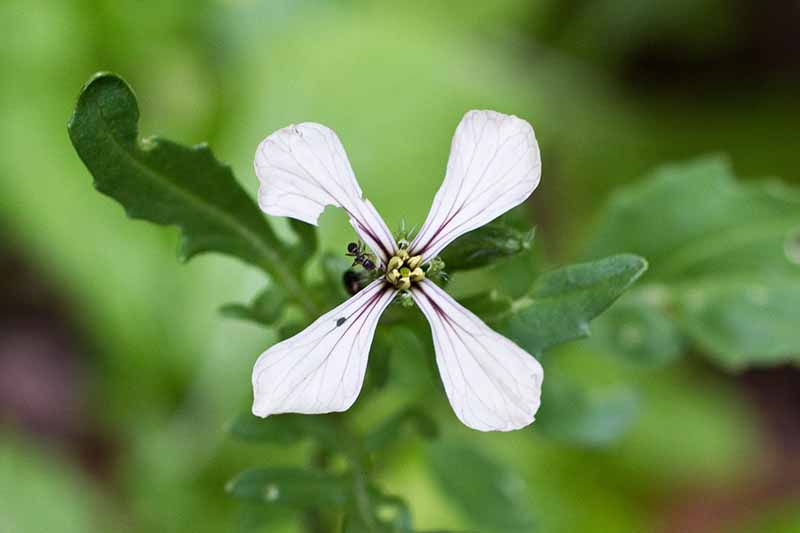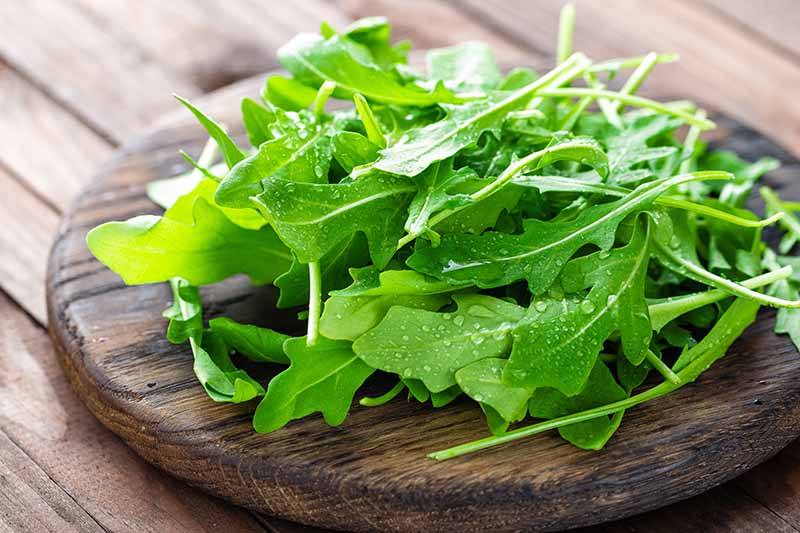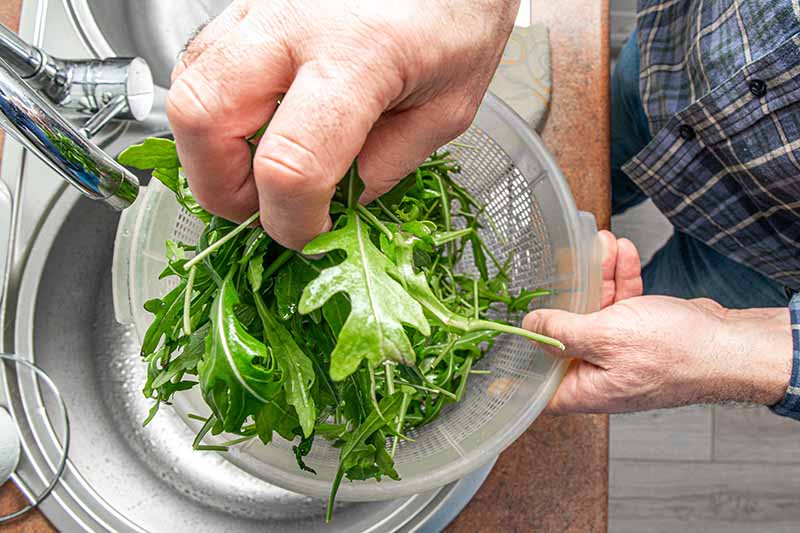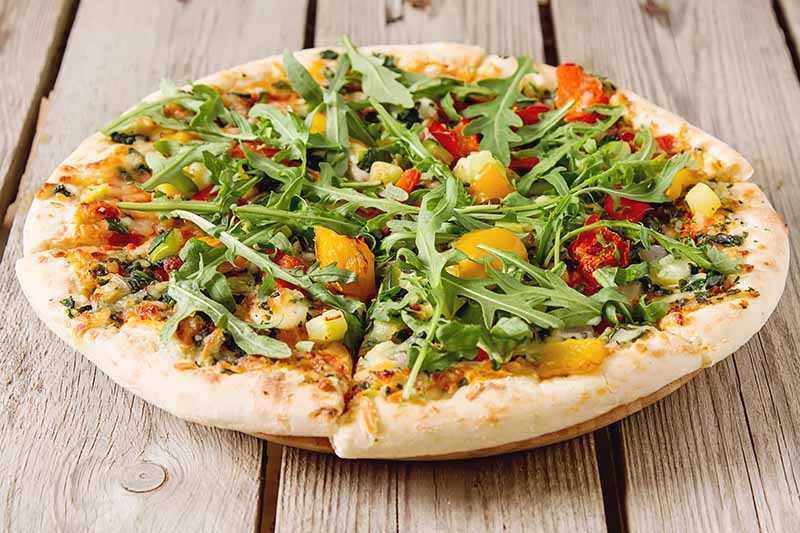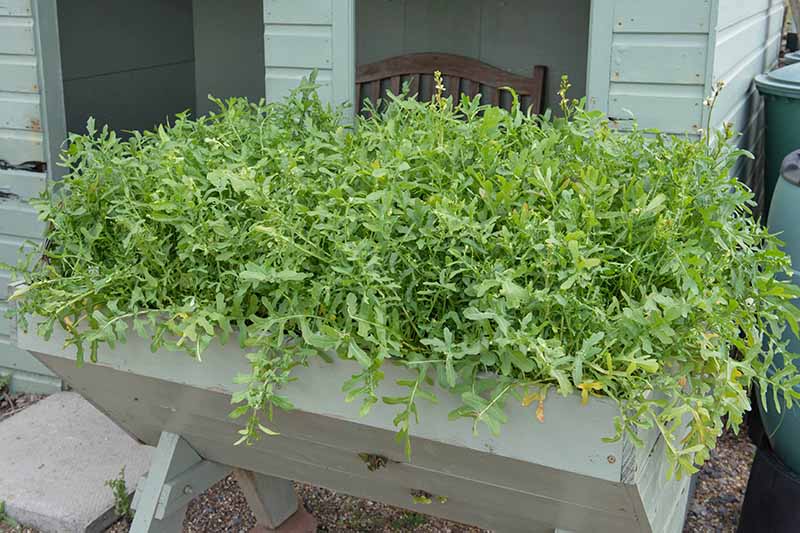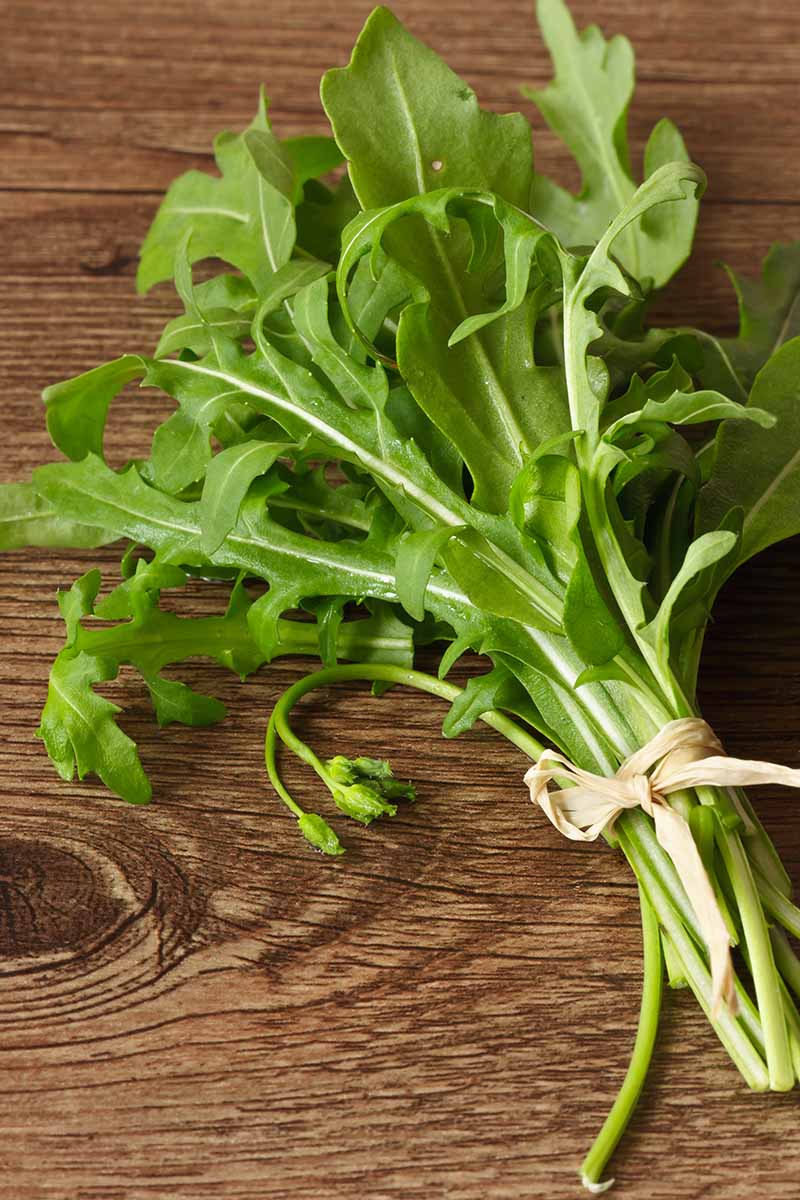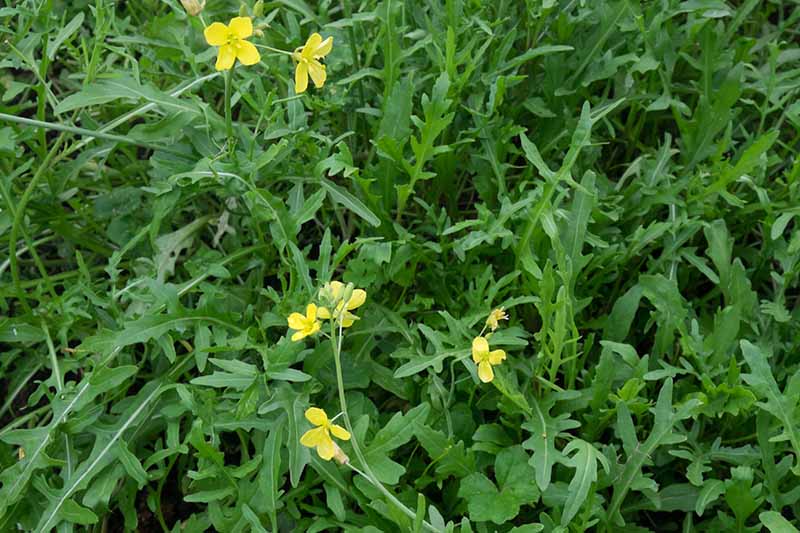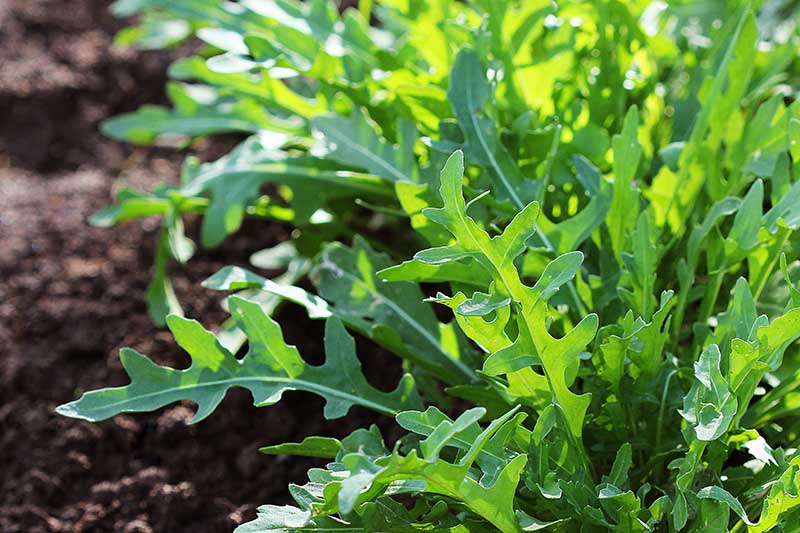I planted the leafy green in my vegetable garden last summer and was surprised by how quickly and easily it grew. If you’ve never tried to grow arugula, Eruca vesicaria, now’s the perfect time to start. You can grow it in your yard, or even indoors. For complete instructions, check out our guide to growing and caring for arugula. We link to vendors to help you find relevant products. If you buy from one of our links, we may earn a commission. Here’s what you’ll discover:
When to Harvest Arugula
Once your seeds have sprouted, but when will it be time to start picking? When you decide to harvest arugula depends first and foremost on when you planted it. Since it’s a cool-weather crop, you can plant it as soon as your soil thaws in the spring in USDA Hardiness Zones 3-6. In Zones 7-11, you should plant it in early spring for a late spring crop, or late summer for a fall crop.
This plant matures quickly, especially compared to lettuce – yet another reason why I think it’s a fantastic choice for salads! The fastest-maturing varieties are ready for harvesting just 35 days after sowing. Most are ready after 50 days. Check the back of your seed packet to determine when the variety you are growing should be ready.
Knowing which variety you are growing is the best frame of reference for when to harvest, but keep in mind that you don’t have to wait the full growing time before plucking leaves for your salads and sandwiches.
Flavor Is Key
A member of the Brassicaceae family, which also counts mustard greens among its members, arugula is often described as having a peppery kick. In young greens, this kick is understated. Tender leaves just a few weeks old have a mild flavor and – in my opinion – make the best salad base.
But if you love biting into a salad with a zesty edge, you’ll want to harvest when the plant is more mature. The older the leaf, the sharper the bite – but there is a caveat to this: If you wait too long, it will bolt. Especially if you’ve planted a summer crop, as this plant favors cooler weather, it will bolt much more quickly under the hot sun than it might if you planted at another time of year.
Some people think once it has bolted, the greens are too bitter to eat. But leaves picked from a bolted plant can be used to make a fantastic pesto, or a peppery addition to your favorite pasta salad. The way I see it, there are three different harvesting stages. Which one you choose will depend on what you’re using the greens for, and what your taste buds prefer.
Best Time of Day to Harvest
One of the keys to harvesting tasty greens lies within the time of day when you harvest. Here are three things you should know:
Never harvest in full sun, because the hotter the greens are when you pick them, the faster they will wilt.
Avoid harvesting in wet weather, unless you want soggy greens.
Always pick during the coolest, driest time of the day – typically in the evening as the sun’s going down, or in the morning if there’s no dew.
While the majority of us gardeners are not necessarily at our perkiest and freshest at the crack of dawn or the end of a long day, fresh greens are ready and waiting, at their peak of freshness. And who doesn’t love an excuse to make a trip out to the garden for a leisurely harvest session among the vegetables with our morning cup of coffee in hand, or after work when we’re concocting plans for dinner?
How to Harvest Baby Greens
In supermarkets, leaves from the young plant are often labeled as “baby arugula.” This isn’t a special cultivar, but rather, these are leaves picked just a few weeks after planting.
There are two ways you can harvest baby greens: pinching, or cutting. First, check to make sure the leaves are long enough. If they are two to three inches long, they are ready for picking as baby greens. It usually takes about three weeks from sowing to reach this stage, depending on the variety. If you just need a few young leaves for a small salad or garnish, pinch them off from the outer portion of each plant, leaving plenty of even younger ones to keep growing and maturing at the center. For a bigger salad, maybe a fresh green salad with arugula, beets, goat cheese, and olive oil like this one from our sister site, Foodal, you’ll want to pick your baby greens in larger bunches.
To harvest more leaves in batches, use a pair of clean gardening shears or kitchen scissors and start cutting the more mature, outer leaves first, making sure to cut them at the base of their stems. Then cut the younger leaves from the center of the plant. Leave behind all the new growth on the central stalk, as well as the smallest baby leaves, and just a few big ones. You can harvest half the plant at once without doing it any damage. By cutting it back, you’ll actually encourage new growth, which slows bolting and allows you to “cut and come again.”
But what if you prefer spicy leaves that add an exciting zing to your pizza?
Keep reading to find out how to harvest mature leaves.
How to Harvest Mature Leaves
You can harvest mature greens for a more full-bodied, peppery flavor when the leaves are at least six inches tall.
To harvest, you can take a clean garden knife or shears and cut up to half of the leaves from each plant, at the base of the stalks, just like you’d do for baby greens. If it’s hot outside, watch your plant for the telltale sign that it’s about to bolt: the emergence of small, weedy-looking, lobe-less leaves at the top of the plant. These leaves are shortly followed by flowers, so act quickly if you don’t want your crop to bolt!
For a quick and thorough harvest of an entire plant when it’s mature – 35-50 days after sowing, depending on the variety – loosen the soil around the plant with your fingers and gently pull it up, roots and all. Remember to pull the plant in the evening or morning, and avoid harvesting rain-soaked leaves or those covered in dew.
When Arugula Bolts
Every time I go out to eat with my parents at an Indian restaurant, they order their dishes with the highest level of spice. And this makes me feel like a wimp with my sheepish request for, “Medium spicy, please.” Something tells me my folks would love bolted arugula.
It’s the strongest-flavored rocket of all. If your plant has really gone wild and is growing leaves off a thick, woody stalk, don’t eat that part. Just pluck the leaves off the stalk, and use them in that arugula pesto. You can even harvest arugula flowers. They make a flavorful addition to any spring salad. This tasty green can totally change your perspective on salad, like it did for me – a self-proclaimed salad-hater until I met arugula. You don’t have to give up lettuce in order to enjoy arugula, of course. The two combine admirably.
Have you ever grown arugula? Share your harvest tips, tricks, and questions below! For more information on how to grow and harvest other cruciferous vegetables, check out these articles next:
How to Harvest Kale How to Grow Collard Greens, A Taste of Southern Culture How to Harvest Brussels Sprouts
© Ask the Experts, LLC. ALL RIGHTS RESERVED. See our TOS for more details. Originally published on January 30, 2020. [lastupdated]. Uncredited photos: Shutterstock. With additional writing and editing by Clare Groom and Allison Sidhu.
